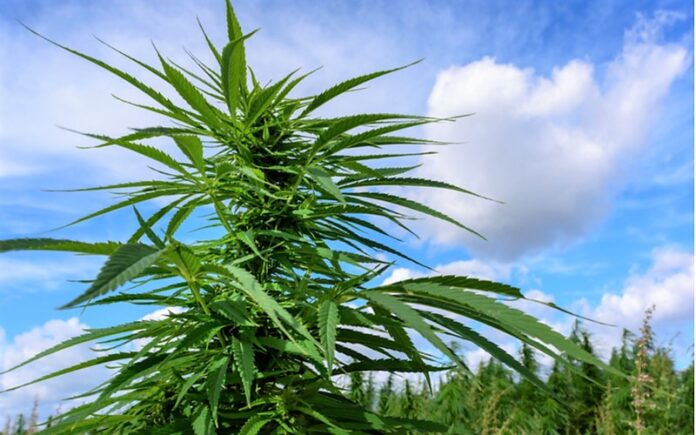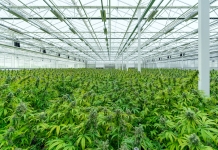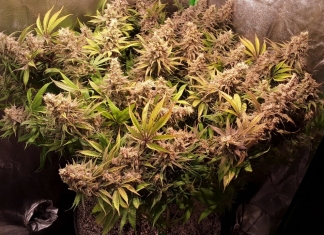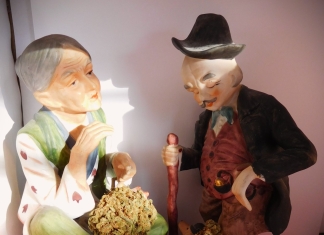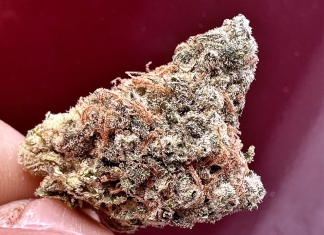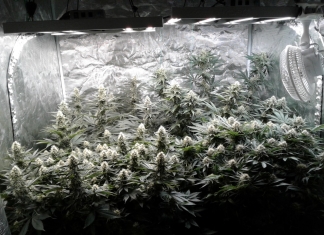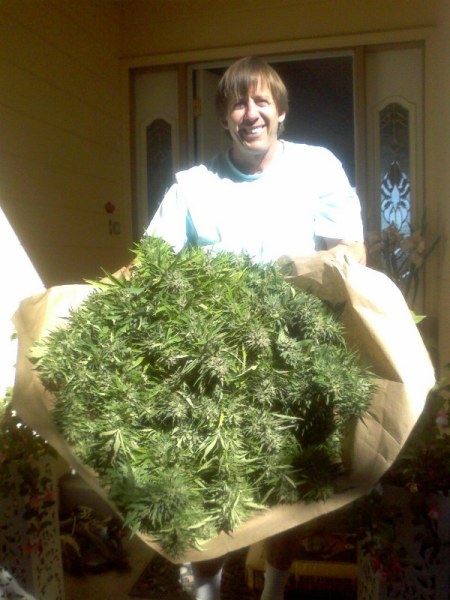Colorado just released a big report on how cannabis legalization is going. Here’s what it found.
As expected, marijuana-related arrests are down and tax revenue is up, but other trends are less clear.
More than seven years since Colorado became the first state to allow cannabis to be sold at stores for recreational use, pot arrests are down, marijuana-impaired driving cases are up and school expulsions are both up and down.
Those numbers — and a whole lot more — come from a new report released Monday by the state Department of Public Safety, which is required by law to study the impacts of cannabis legalization. In a new 180-page report, a statistical analyst from the department’s Division of Criminal Justice painstakingly goes through the numbers to provide the most comprehensive summary available about what has happened since voters in 2012 approved a state constitutional amendment legalizing possession and sales of small amounts marijuana. (Recreational cannabis stores opened during a New Year’s Day snowstorm in 2014.)
But the analyst, a longtime tracker of marijuana data named Jack Reed, is also hesitant about drawing conclusions from this mountain of information. He cited inconsistencies in how data was collected and other limitations that make it difficult to draw hard conclusions.
“The lack of pre-commercialization data, the decreasing social stigma, and challenges to law enforcement combine to make it difficult to translate these preliminary findings into definitive statements of outcomes,” he wrote.
Here’s what Reed found:
Marijuana-related arrests are down
The total number of arrests of adults for marijuana-related crimes decreased by 68% between 2012 and 2019, Reed found. Arrests for marijuana possession dropped by 71%, while arrests related to marijuana production increased by 3%.
However, there remains a racial disparity in arrests for cannabis-related offenses. Arrests for white individuals decreased by 72%, while arrests for people who are Hispanic declined by only 55% and arrests for people who are Black declined by 63%. The arrest rate for people who are Black — 160 arrests for every 100,000 people — is still more than double the arrest rate for people who are white, 76 arrests per 100,000 people.
Juvenile arrests also declined, although they dropped more for kids who are white than for those who are Hispanic or Black.
Major marijuana-related crime has been on a rollercoaster
Reed also looked at two measurements of large-scale black market activity: criminal cases brought under organized crime statutes and reports of diversion to other states.
The number of court filings charging a violation of the Colorado Organization Crime Control Act related to marijuana jumped sharply after legalization, from 31 in 2009 to 119 in 2017. But they declined to 34 in 2019.
Meanwhile, reports of Colorado cannabis being illegally diverted to other states has followed a similar path. In 2012, there were 286 reports to a federal database of cannabis that could be traced back to Colorado being seized in other states. By 2017, there were 673, but the number declined to 266 in 2019.
Marijuana DUIs are up
The number of DUI summonses issued by the Colorado State Patrol in which marijuana was listed as at least one of the impairing substances increased 120% between 2014 and 2020, and cases involving just marijuana rose to 8.7% of all DUIs in 2020, from 6.3% of all DUIs in 2014. DUIs involving marijuana in combination with other substances, like alcohol, rose to 22.7% of all DUIs in 2020, from 5.7% of all DUIs in 2014.
However, Reed urges extra caution here. The numbers come only from the State Patrol — leaving out figures from local law enforcement agencies. Law enforcement agencies statewide have also nearly doubled the number of officers who are trained drug recognition experts, meaning that agencies might be better at spotting marijuana impairment than they were before.
Fatalities involving marijuana-impaired drivers were flat. There was a slight increase in the number of fatalities in which a driver tested positive for more than 5 milligrams of Delta-9 THC, marijuana’s intoxicating compound, per milliliter of whole blood — 56 in 2019, up from 52 in 2016. But the prevalence of those instances declined to 13% of total traffic fatalities in 2019, from 14% in 2016.
Adults are using cannabis more — especially older adults
The percentage of adults who reported using cannabis in the prior 30 days rose to 19% in 2019, from 13.4% in 2014. But usage among people ages 65 and older has tripled.
Fewer people are reporting smoking marijuana flower — think joints and bongs and pipes — though it’s still the most common route of consumption. More are vaping (32% in 2019), consuming infused drinks or edibles (43% in 2019), and dabbing high-potency concentrates (19.6% in 2019).
Hospitalizations have leveled off
The number of people being hospitalized after consuming marijuana — intentionally or mistakenly — boomed during the early 2010s, when medical marijuana stores flourished. But hospitalizations for cannabis-related reasons have been flat since 2016, according to Reed’s report.
Hospitalizations are especially tricky to track because the medical industry changed its billing codes right around the time recreational marijuana stores opened in Colorado. This means there’s not direct comparisons that can be made between current numbers and pre-legalization numbers. It’s possible that some hospitalizations that would be reported as marijuana related now wouldn’t have been then and vice versa.
Calls to poison control related to marijuana have increased. People being admitted for substance abuse treatment related to marijuana use have declined since 2012, to 182 admissions per 100,000 population in 2019 from 222 in 2019.
It’s not clear if kids are using cannabis more
The Healthy Kids Colorado Survey is generally regarded as the best measurement of Colorado kids’ substance use. It has shown no increase in the percentage of Colorado kids using marijuana in the prior 30 days.
In 2019, the rates of marijuana use reported for Colorado kids — 20.6% of high schoolers said they had used cannabis in the prior 30 days — were not statistically different from national rates, Reed found.
A different survey — the National Survey on Drug Use and Health — reported that use among Colorado youth is slightly higher now than it was in 2006, but it has also declined since a peak around 2013.
Among kids in treatment for substance use, 73.5% report marijuana as their primary substance. The report does not say what percentage of these youth are in treatment voluntarily or as a result of disciplinary proceedings.
School expulsions were way up, then way down
The rate of kids who were expelled from Colorado schools for drugs was 65 expulsions per 100,000 registered students in the 2008-09 school year. It then jumped to 91 expulsions per 100,000 students in the 2010-11 school year and decreased to 23 expulsions per 100,000 students in the 2019-20 school year.
Suspensions followed a somewhat similar pattern. Drug-related suspensions went from 391 per 100,000 registered students in 2008-09, to 551 in 2010-11 to 426 in 2019-20.
Both of these numbers cover expulsions and suspensions related to all drugs. Marijuana accounted for about 30% of all expulsions in the 2019-20 year and about 34% of all law enforcement referrals. Reed writes that most of these were likely related to marijuana possession.
Tax revenue has grown
Since recreational cannabis stores opened, government revenue has skyrocketed.
A total of $387 million was taken in in 2020 from taxes, licenses and fees. That’s a 473% increase from 2014, when governments collected $67 million


